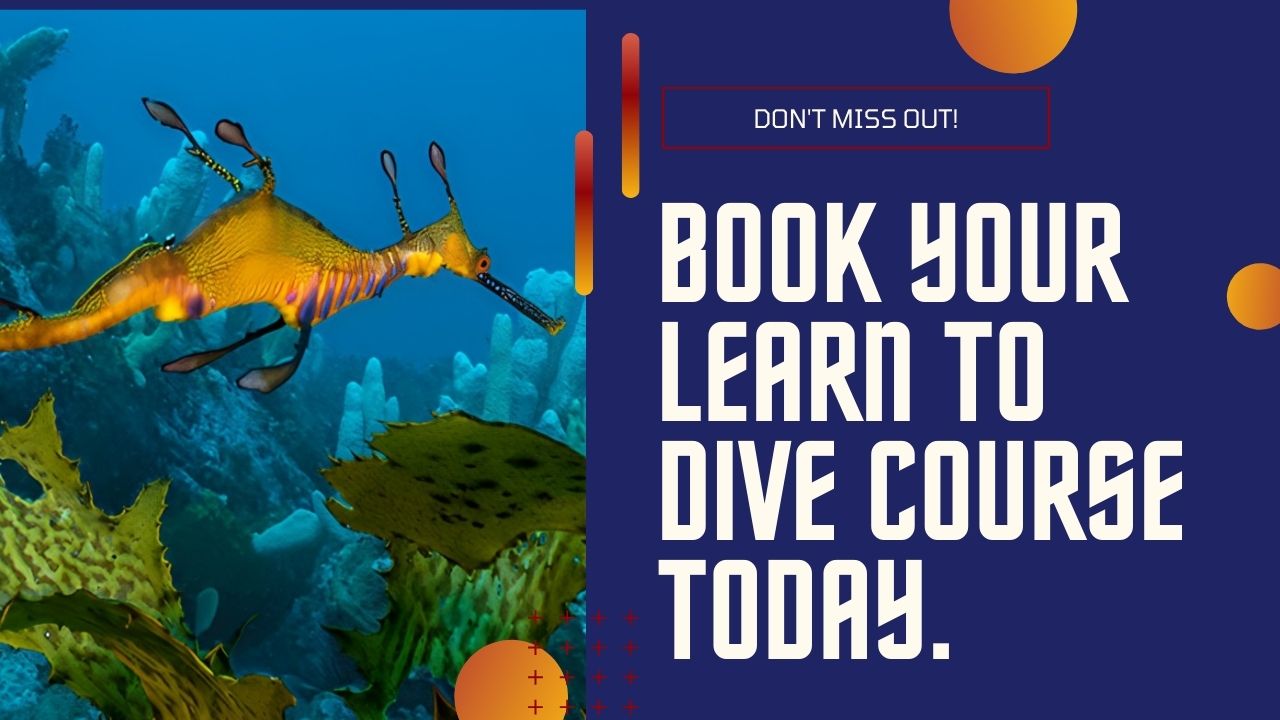You have 0 product(s) in your cart.
Abyss Scuba Diving
Beginner’s Scuba Diver Guide: Underwater Adventure Awaits
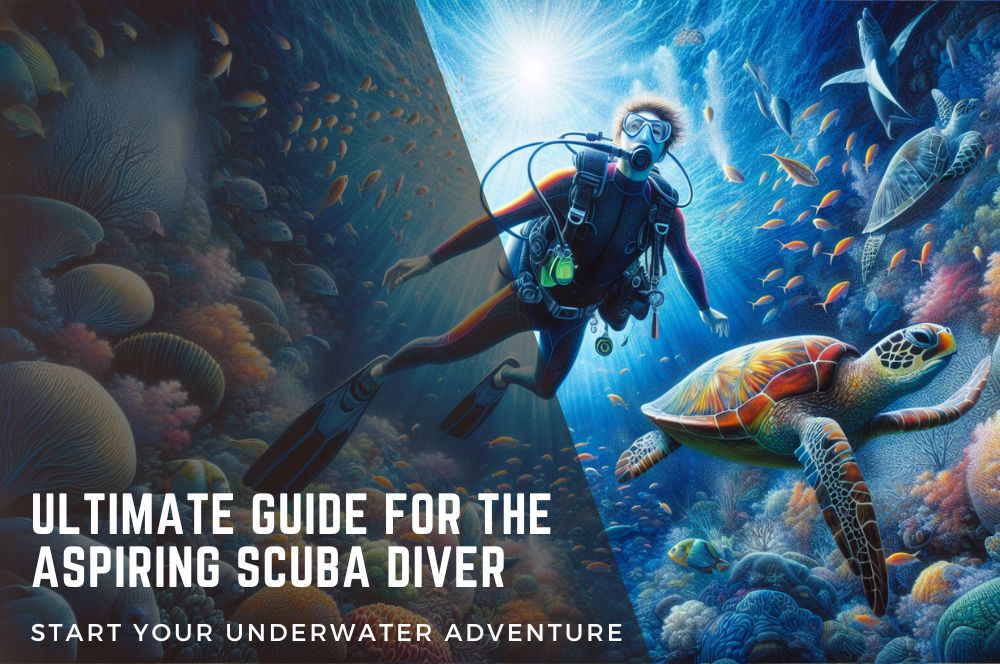
Ultimate Guide for the Aspiring Scuba Diver: Start Your Underwater Adventure
Ready to dive into a world beneath the waves? Becoming a scuba diver is more than learning a new hobby; it’s gaining access to an unseen universe of marine life, serene vistas, and the unique sensation of floating weightlessly. This guide demystifies the journey from your first breath underwater to getting PADI Open Water Diver certified. With straightforward advice on gear, techniques, and safety, we’ll ensure your scuba diving initiation is as invigorating as it is smooth, setting the stage for countless aquatic adventures.
Key Takeaways
-
Dive into a new realm with scuba diving: it’s a transformative adventure blending adrenaline with the serene beauty of the underwater world, where becoming certified connects you to a global community of enthusiasts and conservationists.
-
Scuba gear is your underwater lifeline! Embrace innovations like the Avelo Dive System for a lightweight, buoyancy-optimized diving experience, and remember that proper gear maintenance is vital for both performance and longevity.
-
Scuba offers a continuous journey of mastery and discovery, from local dive spots to bucket-list destinations and advanced training opportunities, like achieving the prestigious Master Scuba Diver status or delving into technical diving for the ultimate challenge.
The Thrill of Becoming a Scuba Diver

Scuba diving is an adventure that offers a unique blend of adrenaline and tranquility. The moment you leap from the boat and scuba dive into the blue, the surface world fades away, and you’re engulfed in the silent majesty of the underwater realm. It’s not just about the dive itself; it’s about the entire journey—from gearing up on the deck to the first glimpse of marine life that leaves you in awe.
As you float weightlessly, watching the sunlight dance through the water and illuminate the colors of the ocean, you’ll find a peaceful escape from the daily grind, a serene adventure beckoning you to explore more. And when you resurface, you’ll share stories with other divers, reliving the moments that only those who have taken the plunge can truly understand.
Your First Breath Underwater
Experiencing your first underwater breath can feel surreal. As you submerge, every instinct tells you that you shouldn’t be able to breathe, but then you inhale through the regulator, and a world of possibilities opens up before you. The sound of your own breathing becomes a comforting rhythm in the silent underwater landscape, and any initial hesitations are washed away by the enchantment of the deep.
It’s a transformative moment, the start of an underwater adventure that will change the way you view the world. With each bubble that escapes to the surface, you’ll feel more connected to the life that teems beneath the waves, eager to explore further and see what secrets the ocean holds.
From Novice to Certified Scuba Diver
Entering the expansive world of scuba diving as a novice can evoke both excitement and apprehension. But the path to becoming a certified diver is well-trodden and designed to take you from your first tentative breaths to confidently exploring the depths. The journey begins with Discover Scuba Diving—a half-day experience that lets you dip your fins into the water without committing to a full course.
If the call of the ocean captures your heart, the PADI Open Water Diver course awaits, taking three to five days to complete and culminating in open water dives that certify you to dive globally. With this certification, you’re no longer just a visitor to the underwater world; you’re a recognized member of an adventurous community, ready to dive into oceans around the planet. And as you continue to explore, you’ll learn that scuba diving is about more than just excitement—it’s a hobby that requires dedication and training to ensure your safety and the preservation of the marine environment.
A Community Beneath the Surface
When you become a certified diver, you join a vibrant community that goes beyond sharing a hobby—you become part of a global effort to protect the ocean and its inhabitants. Scuba divers are not just adventurers; they’re advocates for marine conservation, united by a passion for the underwater world and a commitment to its preservation. As you learn more about the ecosystems you explore, you’ll discover opportunities to contribute to ocean conservation initiatives and to foster sustainable diving practices.
The PADI organization is at the forefront of this movement, creating a network of divers dedicated to making a positive impact on the ocean—our planet’s most vital and captivating ecosystem.
Gear Up: Essential Scuba Equipment Explained
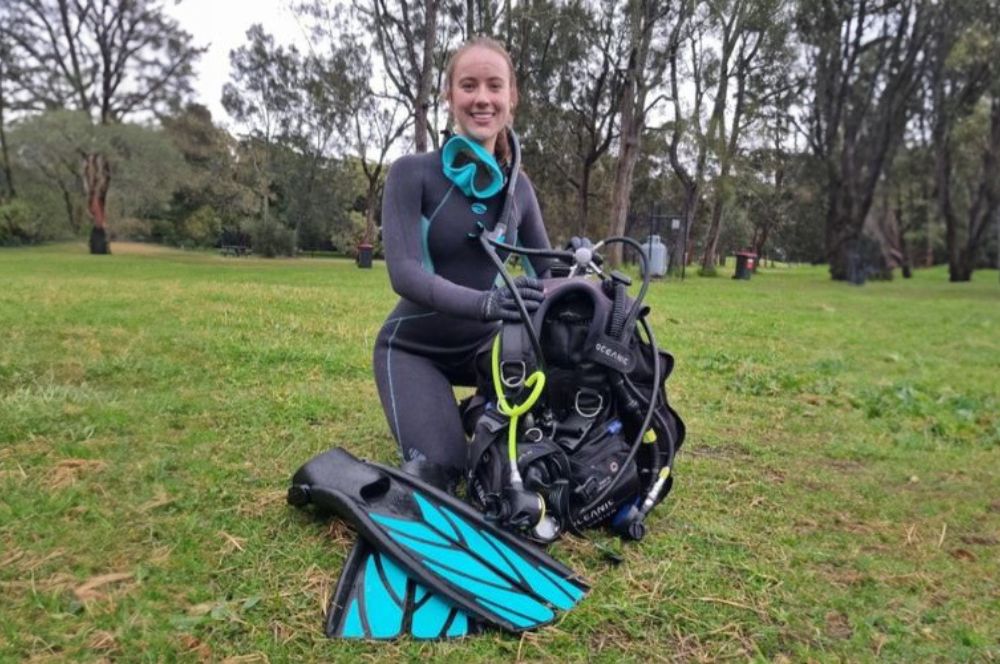
Embarking on your underwater journey requires the appropriate scuba equipment. This gear is your lifeline, allowing you to breathe, move, and interact with the underwater environment safely. From the buoyancy control device that helps you float effortlessly to the regulators that deliver air from your tank, every piece of equipment has a specific function that enhances your diving experience.
Knowing how to select, operate, and preserve your gear is vital for every dive, irrespective of your experience level. With the right setup, you’ll maximize your comfort and safety, ensuring that every dive is a memorable one.
Choosing the Right Scuba Set for You
The selection of your scuba gear can be as personal as choosing a favorite dive site. Each element, from your BCD to your fins, should be tailored to fit your diving style and environment. For those just getting their fins wet, it’s critical to prioritize user-friendly and easy-to-maintain equipment.
BCDs come in various styles—jacket, back-inflation, and hybrid models—each catering to different diving conditions and personal preferences. The Avelo Dive System, designed specifically for beginners, simplifies gear setup and helps you achieve better buoyancy control, making your diving experience more accessible and enjoyable,. It’s advisable to test different sets of gear through rental or trial dives at your local dive center before making a purchase, ensuring that your scuba set matches your needs and enhances your diving adventures.
The Avelo Revolution in Dive Gear
The Avelo Dive System is a game-changer in the scuba diving world, redefining what divers can expect from their equipment. Its lightweight design and integrated buoyancy control are not just convenient features; they represent a significant advancement in diving technology,. Thanks to its innovative construction, divers using the Avelo System can enjoy the freedom of carrying about half the weight compared to traditional scuba gear, a benefit that cannot be overstated.
Moreover, the Avelo’s unique approach to buoyancy control, which uses a water weight ‘borrowing’ technique, simplifies achieving neutral buoyancy. This is especially beneficial for new divers who are still mastering their buoyancy skills. Additionally, the Avelo Mode on dive computers optimizes buoyancy, reduces air consumption, and overall, enhances the joy of underwater exploration, making it an attractive option for divers looking to streamline their diving experience.
Maintaining Your Dive Equipment
The longevity and reliability of your dive gear are directly related to how well you maintain it. Regular maintenance not only extends the life of your equipment but also ensures that it functions properly and safely on every dive. Scuba tanks, for instance, should be routinely inspected for any signs of damage, and the valves checked for leaks. Your regulators, the lifeline to your air supply, require particular attention: they should be rinsed in fresh water after each use, with the mouthpiece cleaned using alcohol or antibacterial mouthwash to prevent contamination.
Neoprene items like wetsuits and gloves also demand care; they should be cleaned with wetsuit cleaner and occasionally disinfected to ensure their longevity. By developing a post-dive routine that includes a thorough rinse and proper drying, you’ll keep your gear in top condition for years to come.
Dive Destinations: Exploring the World's Best Dive Sites

Scuba diving transcends the mere act of diving; it’s also about the captivating destinations it can lead you to. From vibrant coral reefs to historic shipwrecks, the world is filled with dive sites that will leave you in awe. Each destination offers a unique underwater landscape, teeming with marine life and stories waiting to be discovered.
Imagine descending into the mysterious depths of Belize’s Great Blue Hole, exploring the WWII wrecks of Chuuk Lagoon, or gliding alongside hammerhead sharks at Cocos Island—these are experiences that redefine adventure. Whether you prefer the intimacy of a local dive site or the allure of an exotic location, the diversity of the world’s oceans ensures that every dive is a new chapter in your underwater story.
Local Gems: Dive Sites Near You
Your scuba diving adventure doesn’t have to start in far-flung corners of the world. Local dive sites can offer just as much excitement and beauty as their more famous counterparts. By connecting with the local dive community and visiting a dive centre, you can take your time learning and form lasting relationships with fellow enthusiasts.
Exploring regional dive sites serves as an excellent stepping stone, providing you with a variety of underwater landscapes and encounters with diverse marine life, all while building your confidence and skills for future travels. Moreover, achieving your scuba certification close to home has the advantage of learning at your own pace, ensuring that you’re fully prepared for your next vacation dive adventure.
Bucket-List Dive Locations
For many divers, certain locations sit high on their bucket list, calling with the promise of unparalleled underwater experiences. The Great Barrier Reef in Australia offers a kaleidoscope of coral formations to explore, while the Silfra Fissure in Iceland allows divers to touch two continents at once with its crystal-clear waters,.
Diving into the Great Blue Hole in Belize is like descending into a different world, surrounded by the dark blue of the deep and the vibrant life of the surrounding reef. History enthusiasts might find their calling amidst the rusting remains of the Titanic or the scuttled fleet of Scapa Flow, each site offering a dive through time,.
And for those seeking interaction with fascinating marine life, the Galapagos Islands and the clear waters of the Bahamas provide encounters that are nothing short of extraordinary,.
Mastering Buoyancy: The Key to Effortless Diving
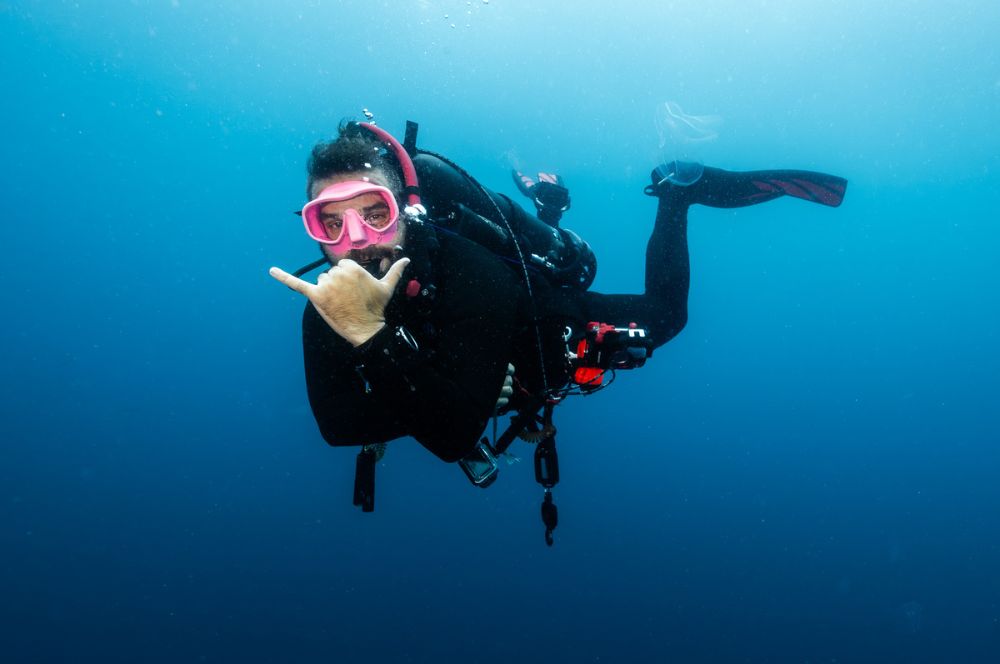
Achieving mastery in buoyancy, a fundamental skill in scuba diving, can elevate a good dive to an extraordinary one. Achieving perfect buoyancy is akin to developing the art of underwater flight, where you glide through the water with grace and ease. It’s not just about the joy of weightlessness; it’s also about minimizing your environmental impact and preserving the delicate ecosystems you visit.
With practice, you’ll learn to hover motionless, use less air, and exert minimal effort as you explore the underwater world.
Avelo Dive System: A Breakthrough in Buoyancy
The Avelo Dive System represents a significant leap forward in the quest for perfect buoyancy. By integrating the buoyancy control into the Hydrotank, the Avelo System eliminates the need for a separate buoyancy compensator, providing a more streamlined diving experience,. This innovation allows divers to achieve stable neutral buoyancy easily, which is crucial for reducing respiratory strain and conserving air.
The result is longer, more enjoyable dives with less physical effort, making the Avelo Dive System an attractive option for both beginners and experienced divers alike.
Practice Makes Perfect
Like any skill, buoyancy control improves with practice. Regularly honing your buoyancy skills enhances your comfort in the water and reduces your air consumption, leading to longer and more relaxed dives.
The Avelo Dive System is particularly helpful for practice sessions, as it allows divers to maintain perfect neutral buoyancy for extended periods, enabling them to focus on fine-tuning their hovering and movement without constant adjustments.
PADI Open Water Diver and Beyond
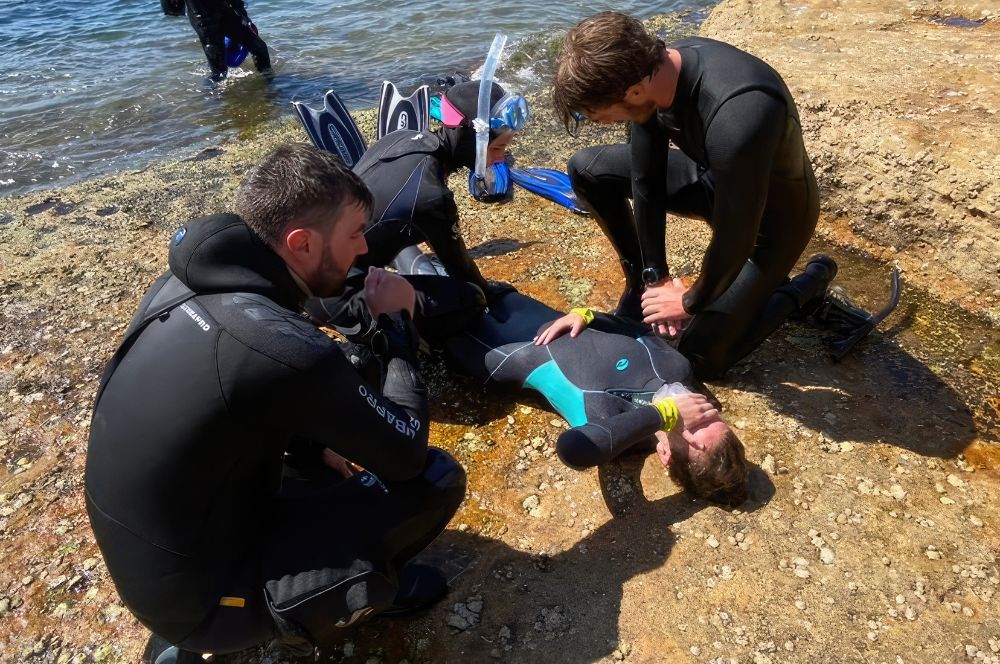
The scuba diving world abounds with opportunities for growth and progression. The PADI Open Water Diver course is your entry point, teaching you the basics of diving and opening the door to the underwater world. But the journey doesn’t end there. PADI offers a range of courses that allow you to delve deeper, navigate more precisely, and even explore at night, each one designed to enhance your skills and enrich your diving experiences.
The Prestige of Master Scuba Diver
Earning the title of Master Scuba Diver is a milestone that marks you as an elite diver within the recreational diving community. It signifies a diver’s extensive training and experience, distinguishing them as someone who has:
-
Explored various diving specialties and environments
-
Hold the Advanced and Rescue Diver certifications
-
Completed at least five specialty courses
-
Have a log of at least 50 dives
It’s not just a badge of honor—it’s a testament to your dedication to diving and a commitment to continual learning and skill refinement.
As a Master Scuba Diver, you set yourself apart and become a leader in the water, embodying the adventure and exploration that scuba diving epitomizes.
Technical Diving: A Different Challenge
For divers who crave more than recreational limits can offer, technical diving opens the door to a whole new world of challenges. Tech diving takes you deeper and further, allowing you to explore beyond the typical 40 meters, which is often considered the maximum depth for recreational diving. By navigating through overhead environments like caves and managing stage decompression, technical diving enables you to push the boundaries of your underwater adventures. It’s a discipline that requires advanced training, a calm demeanor, and specialized gear tailored to the rigors of extreme underwater situations.
Tech divers often venture into territories few have seen, such as the haunting depths of shipwrecks or the silent void of underwater caves. With certifications like Self-Reliant or Rebreather diving, you’ll learn to rely on your skills and equipment in environments where every bubble counts.
Safety First: Scuba Diving Protocols and Precautions
In scuba diving, safety holds the utmost importance. It’s the thread that ties all aspects of diving together, from gear maintenance to dive planning. Effective buoyancy control is at the heart of dive safety, as it impacts air consumption, fatigue, and the risk of decompression sickness. By mastering buoyancy, divers can enjoy the underwater world confidently, knowing they are minimizing their physical effort and avoiding potential hazards.
Safety protocols are not just guidelines; they are essential practices that every diver must follow to ensure both their well-being and the preservation of the marine environments they love.
Pre-Dive Safety Checklist
A thorough safety check is vital even before you immerse in water. This is where the buddy check comes into play, an essential routine that helps prevent accidents and ensures that both you and your dive partner are prepared for the dive. Remember the acronym BWRAF—BCD, Weights, Releases, Air, and Final Okay—to methodically check each other’s gear. Conducting a buddy check before every dive, even if it’s your second or third of the day, is a non-negotiable aspect of dive safety.
It’s also important to assess the dive site conditions, understand the layout and potential hazards, and discuss emergency procedures with your dive team.
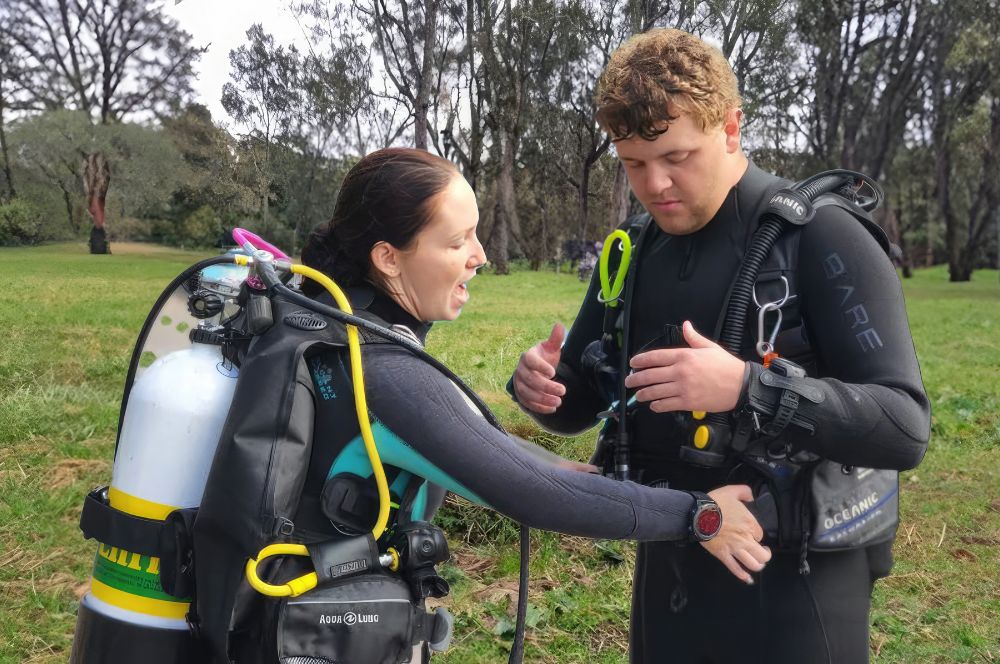
Navigating Common Underwater Hazards
Underwater, the landscape can shift, and visibility can vary. Being able to navigate in these conditions is a skill that can mean the difference between a successful dive and a potentially dangerous situation. Use natural features like coral formations or the sun’s direction, and always carry a reliable dive compass to help you find your way.
Managing your time and depth effectively is essential to prevent decompression sickness and ensure a safe ascent. Be aware of the marine life around you, stay vigilant about changing water conditions, and avoid environments that could lead to entrapment to navigate safely in the underwater world.
Post-Dive Care and Considerations
Surfacing does not signify the end of a dive. Post-dive care is as important as the preparation and execution of the dive itself. Debriefing with your dive team helps reinforce good practices and learn from any mistakes made during the dive. Properly rinsing and drying your equipment after each dive is crucial to prevent damage from saltwater and contaminants, thus extending its lifespan.
Keeping a detailed logbook is not just for tracking your progress; it’s also essential for:
-
Planning future dives
-
Providing critical information in the event of post-dive medical issues
-
Assessing your physical and mental state after a dive to identify any conditions like decompression illness or ensure that you’re not feeling stressed or overloaded from the experience.
Summary
As we resurface from this deep dive into the world of scuba diving, we reflect on the journey that has taken us from the initial excitement of our first underwater breath to the prestigious ranks of Master Scuba Diving and the thrilling challenges of technical diving. Along the way, we’ve equipped ourselves with the knowledge of essential gear, buoyancy control, and the importance of safety. We’ve explored the planet’s most breathtaking dive sites, both locally and globally, and realized that the true beauty of diving isn’t just in the depths we reach but in the connections we make with the ocean and its inhabitants.
Frequently Asked Questions
What should I consider when choosing my first scuba gear?
When choosing your first scuba gear, prioritize user-friendly and easy-to-maintain equipment that suits your diving style, such as the Avelo Dive System for simplified setup and enhanced buoyancy control. Happy diving!
How does the Avelo Dive System improve my diving experience?
The Avelo Dive System improves your diving experience by reducing weight, simplifying neutral buoyancy, and allowing for longer dives with reduced air consumption. Its integrated buoyancy control feature makes diving more intuitive and enjoyable, especially for beginners!
What's the significance of achieving the Master Scuba Diver title?
Earning the Master Scuba Diver title shows advanced skills, diverse experience, and a dedication to ongoing learning and diving excellence. It's the highest recreational diving certification and a great achievement!
What are some of the best dive sites for beginners?
Local dive sites are perfect for beginners to gain confidence and practice, with many dive centers offering guided dives in safe, beginner-friendly environments. Get ready to explore a variety of underwater landscapes! Start your diving adventure today!
Why is a pre-dive safety checklist important?
A pre-dive safety checklist is important because it ensures that all your gear is functioning correctly and that you've discussed the dive plan and emergency scenarios with your buddy, ultimately contributing to a safe diving experience. So, don't skip this crucial step before diving into the adventure!
Recent Posts
